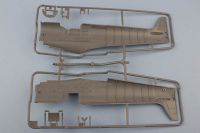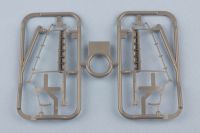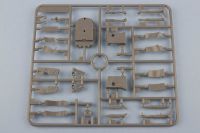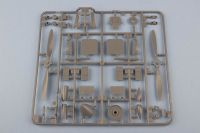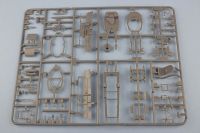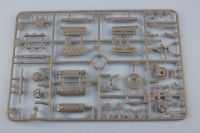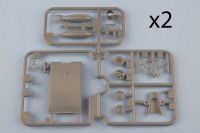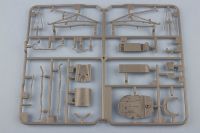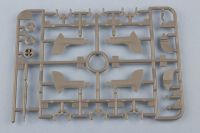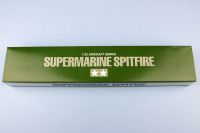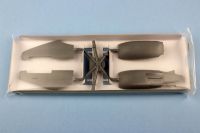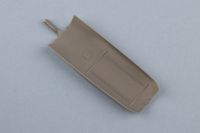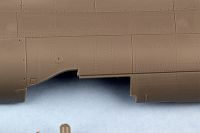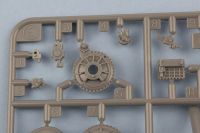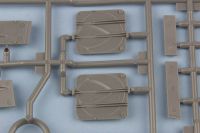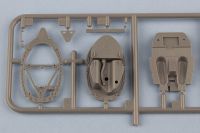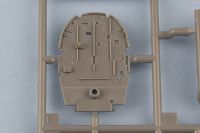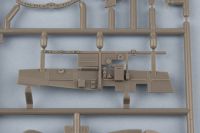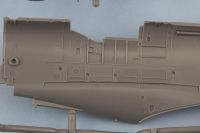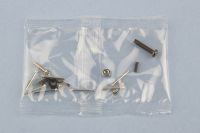Tamiya | 60321: 1/32 Supermarine Spitfire Mk XVIe
Reviewed by Kevin Futter
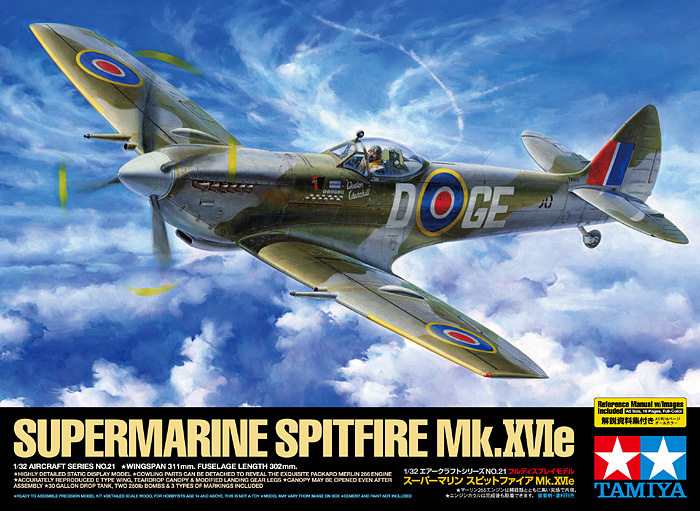
Tamiya released its original Spitfire Mk IX kit way back in 2009, and followed it up the following year with the Mk VIII variant. Tamiya's final foray into the large scale Spitfire market was the low-back, clipped-wing Mk XVI, derived from the original kit thanks to some clever and forward-thinking engineering. Here we take a quick look at what you get in the box.
Plastic Sprues
Despite the seemingly radical differences in fuselage and wing configuration between this and the earlier releases, it actually shares most of the sprues with its predecessors. The main and most obvious difference is that Tamiya has supplied a new sprue for the low-back fuselage halves.
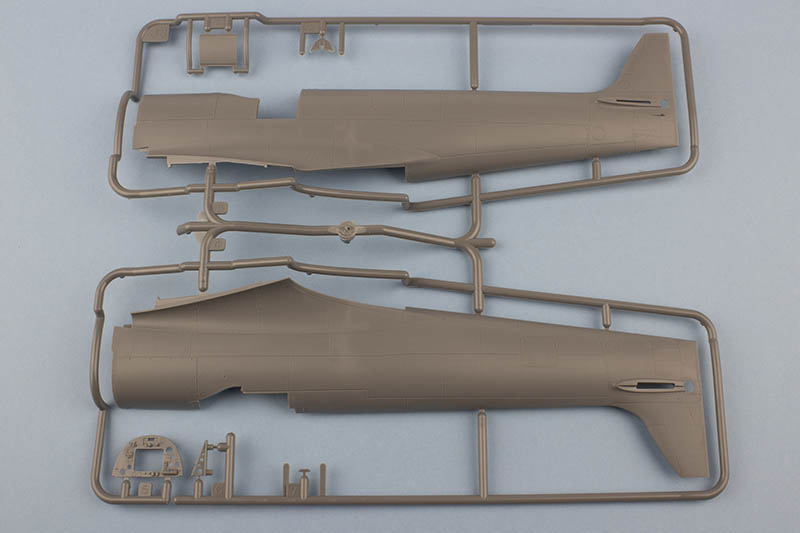
There's also an extra sprue containing appropriate internal bulkhead parts, suitable for the low-back configuration:
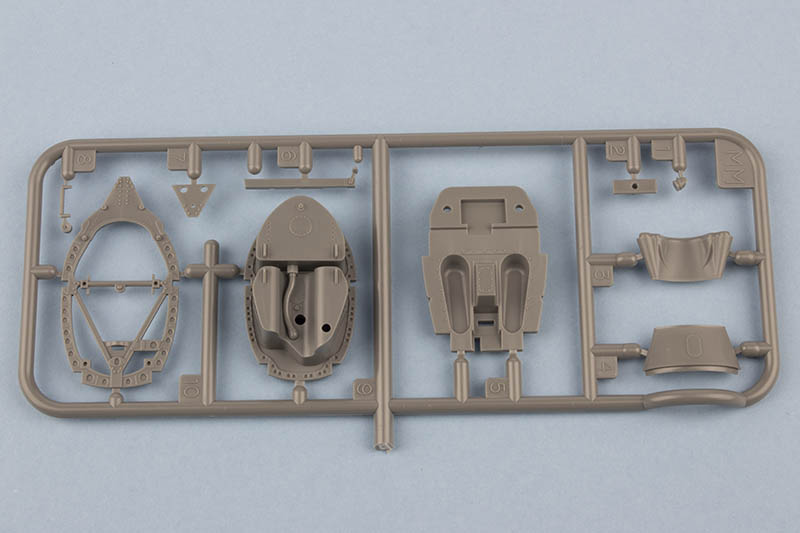
A pair of nicely-done pilot figures is also included, one standing and one seated:
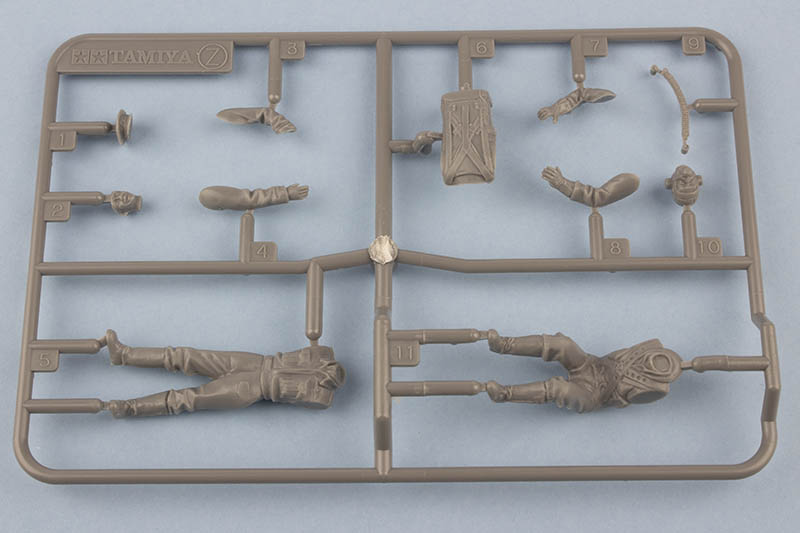
The famously thin nose panels are actually located in a slim box full of extras, tucked away in the side of the box:
Two top cowling parts are included for some reason, though I couldn't see any difference between them, and they appear to duplicates:
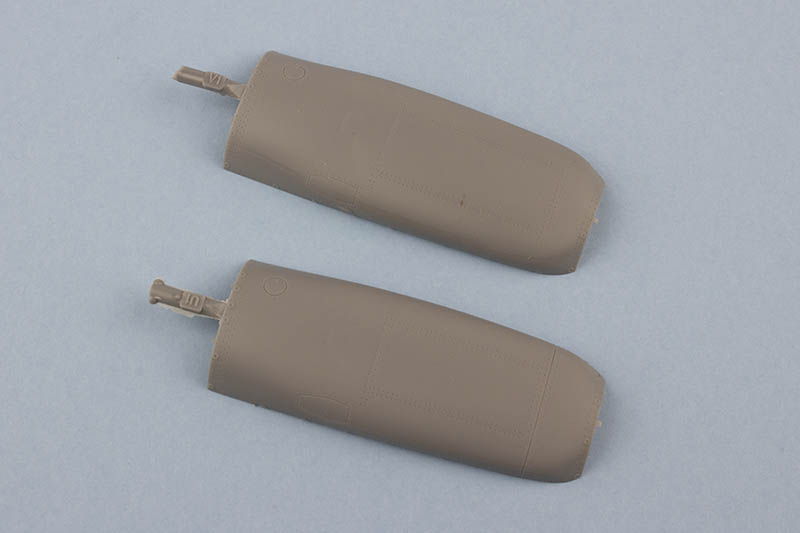
And thin they certainly are! The photo below fails to do this full justice:
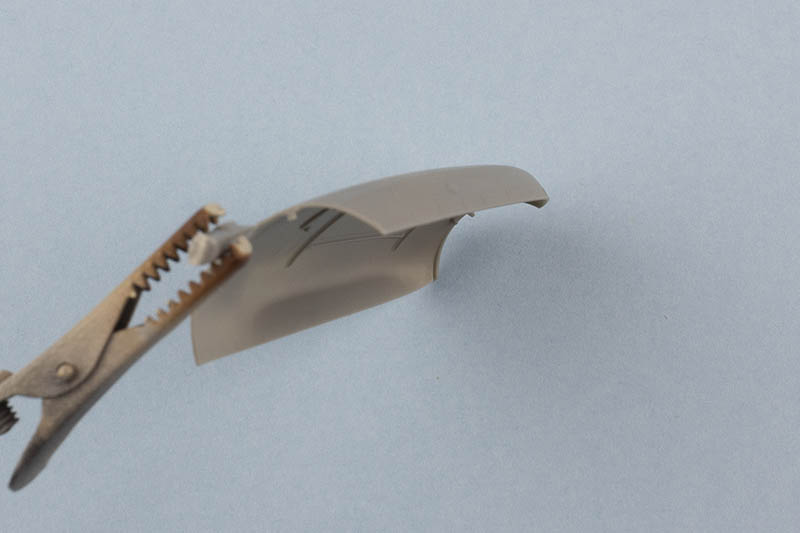
Also famous is the fact that these panels are removable on the final model, held in place by small magnets. These are housed in a clear plastic bag within the same separate parts box as the cowling pieces:

Moulding quality is crisp, and the extent and quality of the included detail is about as good as it gets in a mainstream plastic kit:
One thing you won't see in the sprue photos above is a set of tyres for the main wheels. This is because Tamiya supplies them moulded in a soft vinyl (or possibly rubber):
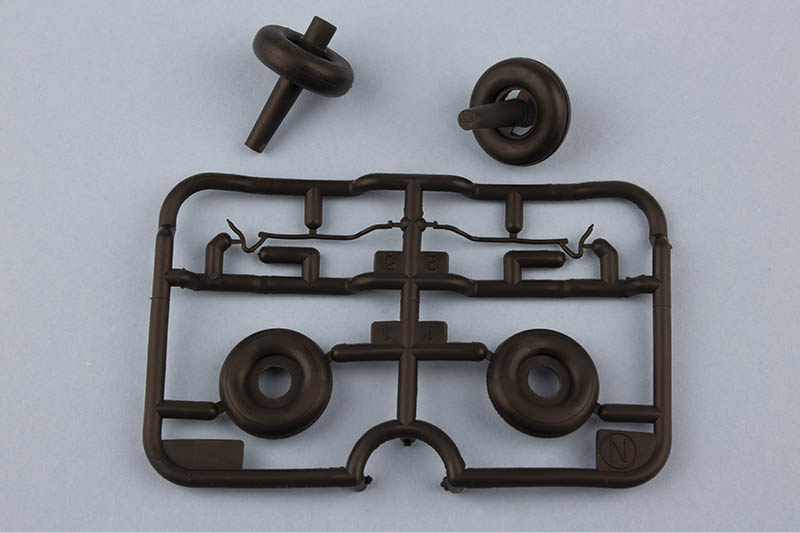
Not obvious in the photo is that the tyres on the sprue itself are actually only half pieces, designed to be used with the landing gear in the retracted position. The two separate pieces are in fact what you would use for displaying the model on its landing gear.
Love them or hate them, they are the only option that Tamiya provides in the box, so if they're not your preferred solution, you'll have to seek alternatives from the aftermarket. Note that the fret also includes a pair of flexible brake lines for use with the main gear legs.
Clear Parts
The clear parts are all included on a single sprue, and are immaculate. The central part of the sprue is common to all three Tamiya Spitfire kits, but some thoughtful engineering has allowed the company to mould the standard sliding hood to the left of the main section, while the bubbletop canopy is moulded to the right (though shown on the left in the photo below):

Unsurprisingly, they pass the clarity test with flying colours:
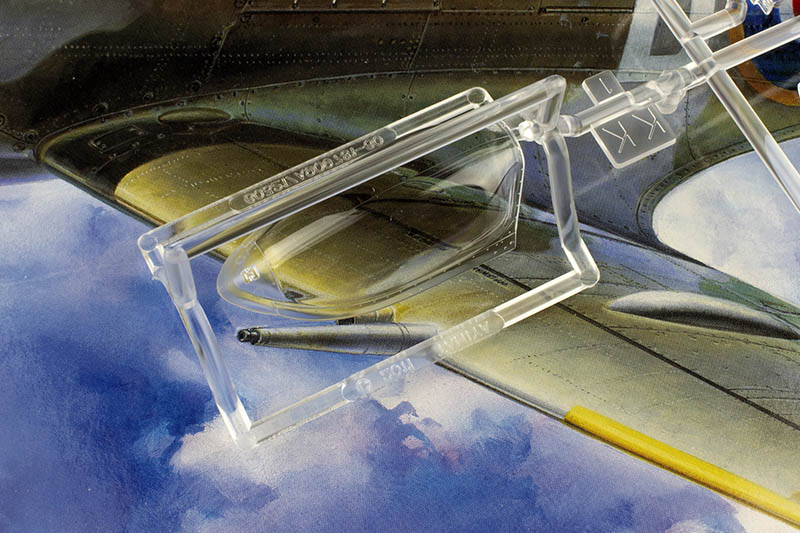
Decals and Markings
The kit's decals are supplied on two main sheets, and appear to be typical Tamiya quality: crisply printed with solid colours and good registration, but a little on the thick side.
Markings are supplied for the following three aircraft:
- D•GE, No. 349 Squadron, Wünsdorf, Germany, Summer 1945
- FD•AA, No. 1 (Pilots) Refresher Flying Unit, Finningley, UK, March 1949
- OU•V, No. 485 Squadron, Fassberg, Germany, Summer 1945
The painting guide for the first scheme (D•GE) is represented on a bonus full-colour A3 sheet, and is not present at all in the main painting guide included in the instruction booklet.
Instructions
The instruction booklet is typical of Tamiya's recent 1/32 scale super-kits, with a front cover in landscape orientation, opening up to content pages in portrait orientation. The assembly sequences themselves consist of standard exploded views, marked with colour call-outs and various other options.
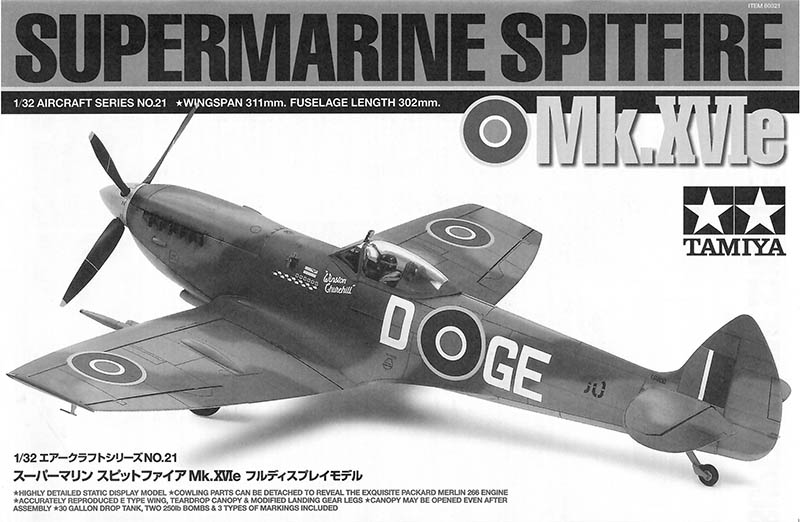

The painting and decalling guide is located on the final pages, and as with the rest of the booklet, no colour is used. Given the quality and expense of these kits, I think this is an area where Tamiya could improve to match the best in the industry.
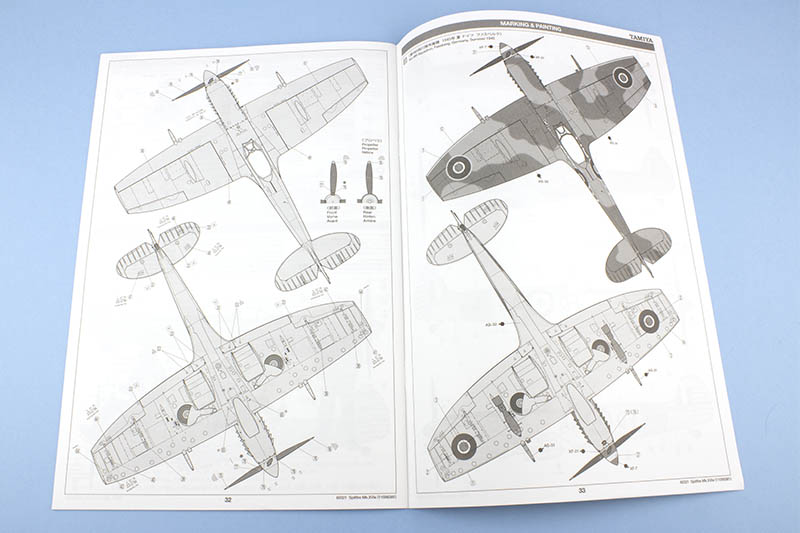
Tamiya redeems itself, however, with the inclusion of an additional A5 booklet in full colour, which provides a potted history of the Spitfire, including drawings, diagrams, and photographs of restored Spitfires. Note that this is the same booklet included in the Mk IXc kit, and presumably the Mk VIII kit also (I don't have that kit to hand to confirm).
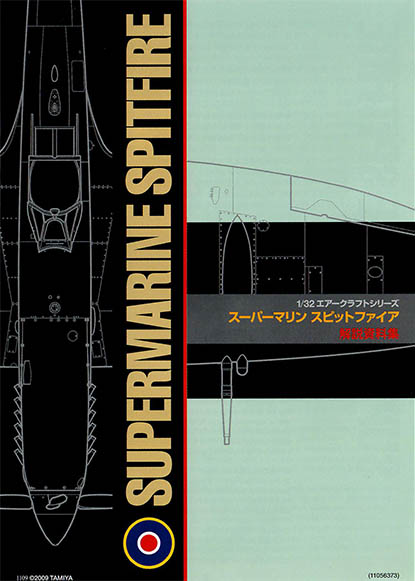
Photo-Etched Parts
Tamiya supplies two photo-etched frets of detail parts, making the rather odd choice to render them in stainless steel. As far as I'm aware, only Tamiya does this, and while it does make the parts much stronger than the more traditional brass, it also makes them much more difficult to work with—especially with regard to removing them from the fret. At least the seat belts can be readily replaced with better aftermarket items.
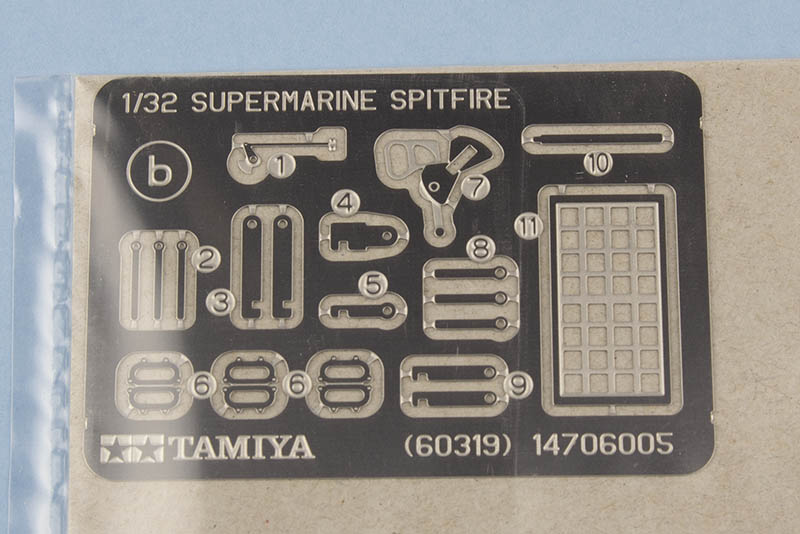
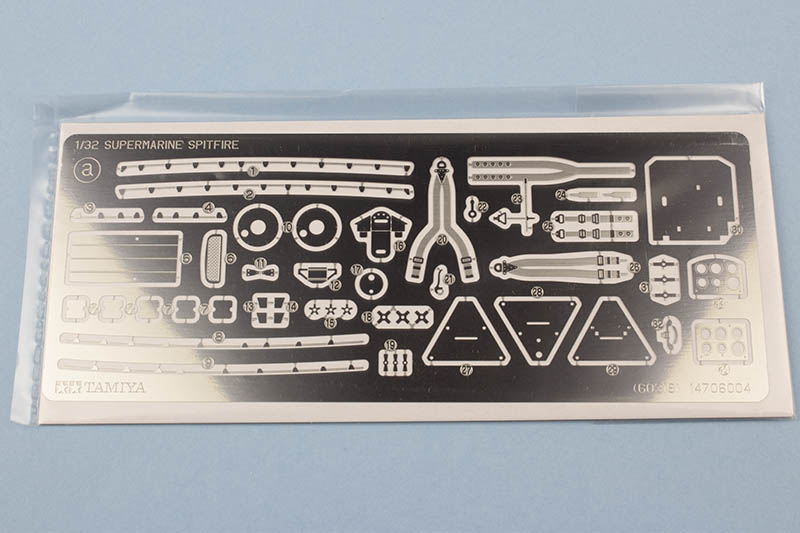
Miscellaneous Elements
This kit wouldn't be part of Tamiya's flagship aircraft series if things stopped there, and in keeping with other kits in the series, this one comes with a range of additional multimedia elements that sets it apart from most of its mainstream contemporaries.
First off there's a set of canopy masks:
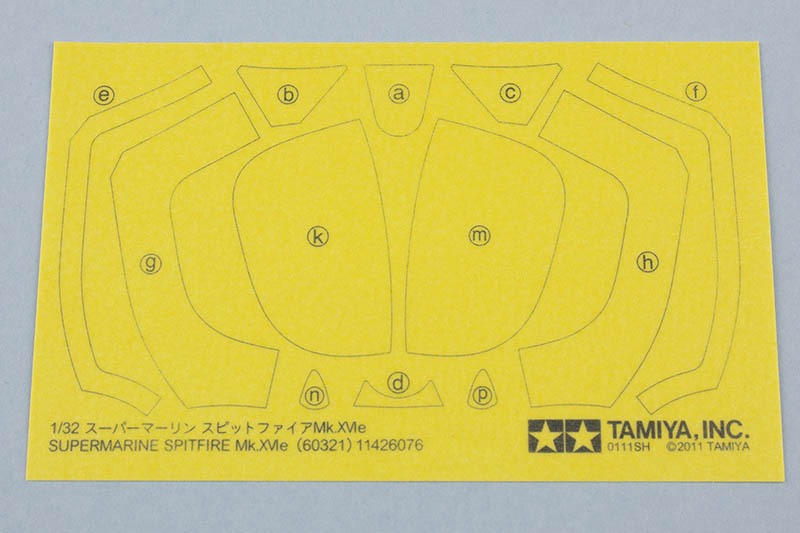
Once again, Tamiya gives with one hand, and takes away with the other. These masks are simply outlines on some suitable masking material, and are not pre-cut in any way. It's up to the modeller to trace around the outlines with a sharp knife to produce correctly-shaped masks you can actually use. To be fair, I found the same arrangement in the company's A6M5 kit easy enough to use and achieve an effective result with.
The kit also provides a set of thin metal rods to be used in conjunction with some of the photo-etched parts to form hinges for some of the control surfaces:
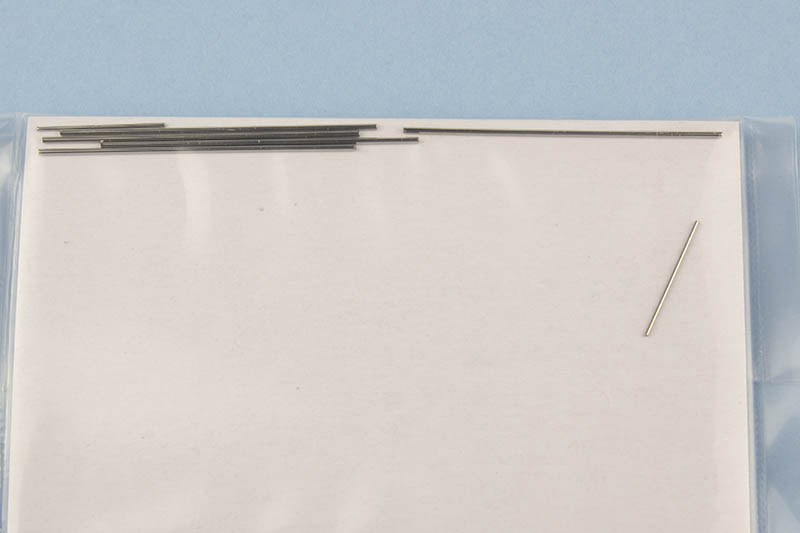
This approach to producing movable control surfaces is not to everybody's taste, as it certainly complicates construction in this area, but these kits are not designed for the neophyte modeller, and this feature should pose no problem to anyone possessing the requisite experience.
Another element that Tamiya has included here that you rarely see in modern kits, is a display stand:

This can be used to display the model in either gear-up (flight) or gear-down (parked) poses, though it obviously suits for the former arrangement best.
A set of stickers for the stand is also provided, which could also be repurposed for other forms of display (a base, for example):
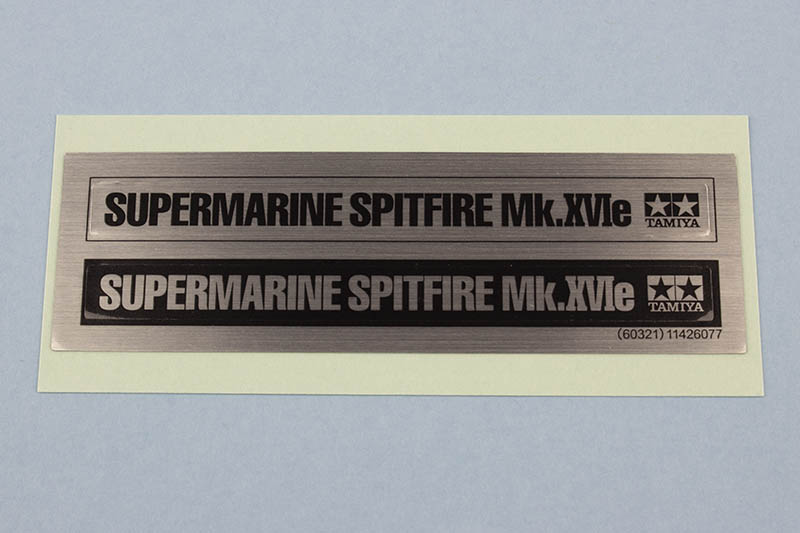
An odd inclusion in the kit is a small tube of lubricant, labelled Grease:
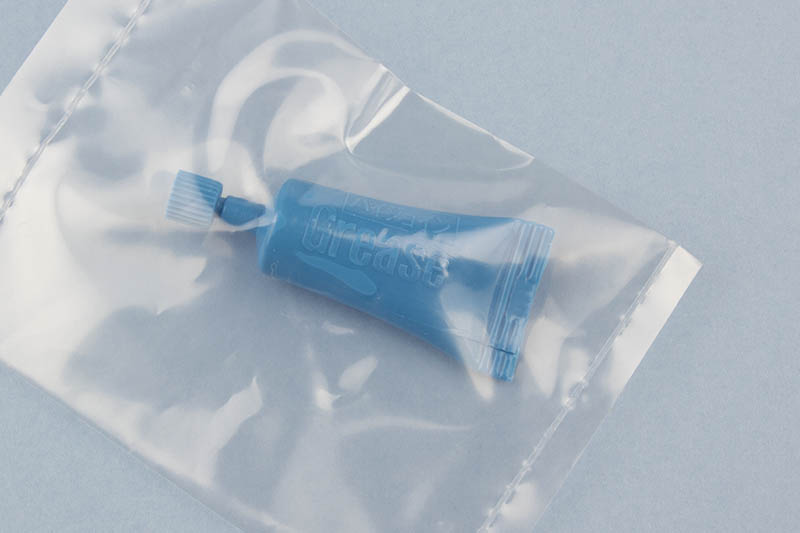
I couldn't find mention of this in the instructions, so I really have no idea exactly what it's for, or why it's included in the kit.
The last item to mention is a set of screws, and accompanying screwdriver, for securing elements such as the landing gear and the display stand:
Also included in the bag with the screwdriver is a sprue of poly caps to assist in securing the propellor and parts of the engine.
Conclusion
It should come as no surprise that Tamiya has managed to knock this one out of the park. I'm sure Spitfire experts could find issues with certain areas (most likely the cockpit), and there are some minor niggles with some elements in the package (such as the masks not being pre-cut), but overall, this is up there with best kits on the market. While various other manufacturers may arguably provide better instructions, decals, or multimedia extras in their kits, no one does plastic better than Tamiya. The only area of concern I have with construction is the use of metal hinges and rods for the control surfaces, which probably elevates this kit just slightly beyond the absolute beginner, but everyone else should cope just fine.
Collectively, the Tamiya family of large scale Spitfires represents the best kits of the type on the market, and this kit simply extends that dominance to another variant. Ultimately, these kits recommend themselves.
Many thanks to HobbyLink Japan for the review kit, which can be purchased at the following link:
© Kevin Futter 2019
This product is available from the following LSP sponsors
This review was published on Saturday, May 18 2019; Last modified on Saturday, May 18 2019

